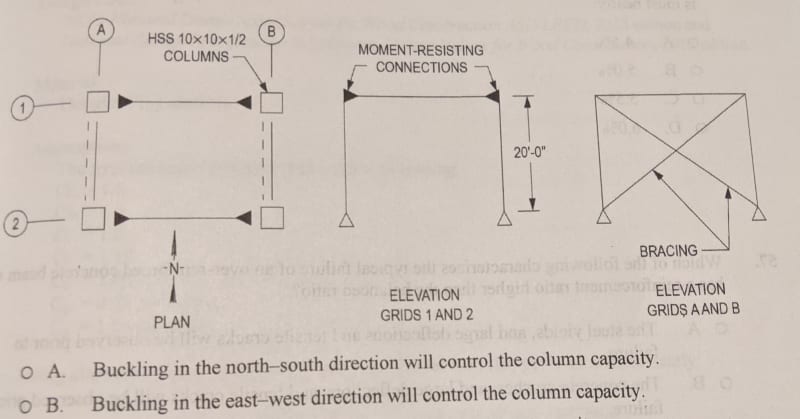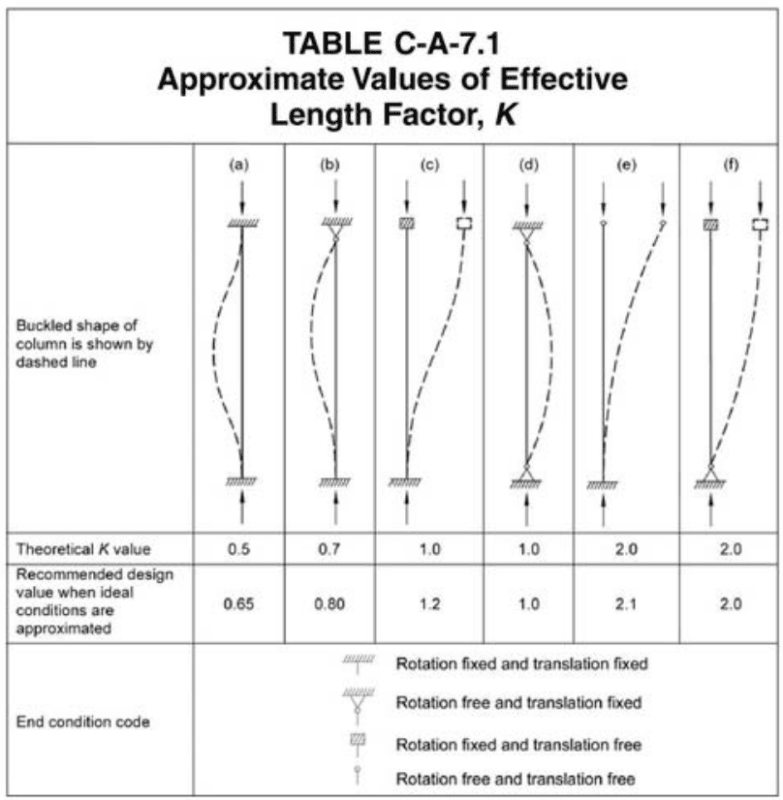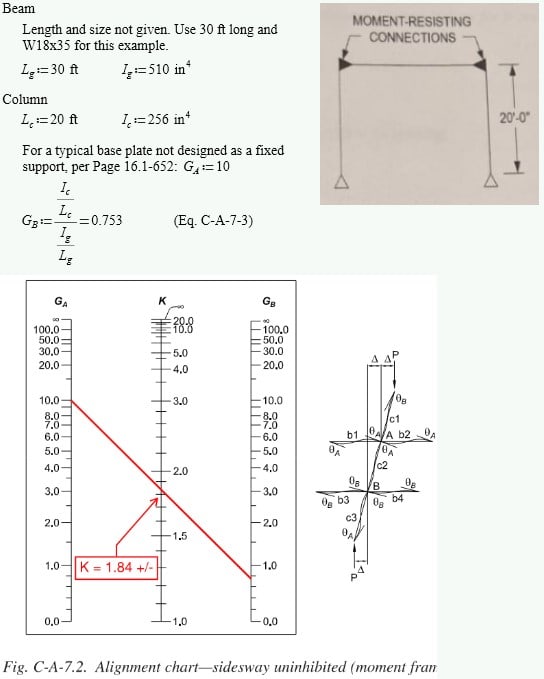wag2483
Structural
- Oct 28, 2009
- 11
Attached is a PE sample problem. The answer is B, not following why. All else equal wouldn't the pin/brace direction have k=1.0, while the pin/moment direction has k=0.7. Thus column capacity is less in the brace (north-south) direction and will govern?




![[bigsmile] [bigsmile] [bigsmile]](/data/assets/smilies/bigsmile.gif) But I do think that it is best to emphasise that controlling of bucklig is a very much a stiffness issue.
But I do think that it is best to emphasise that controlling of bucklig is a very much a stiffness issue.